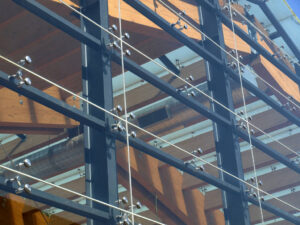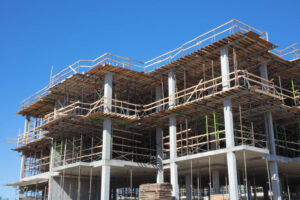In the world of construction, metal buildings have emerged as a modern and innovative solution that offers numerous benefits over traditional construction methods. With their versatility, durability, and sustainability, metal buildings have gained significant popularity across various industries.

This article delves into the fascinating world of metal buildings, exploring their features, advantages, and reasons behind their widespread adoption.
- Aesthetics and Versatility:
One of the primary reasons for the increasing popularity of metal buildings is their aesthetic appeal and versatility in design. With advancements in technology, metal structures can be customized to suit diverse architectural styles. Metal panels and finishes come in a wide range of colors, textures, and patterns, allowing for creative and eye-catching designs. Whether it’s a sleek modern office building, a rustic warehouse, or an industrial facility, metal buildings offer the flexibility to achieve a desired aesthetic while maintaining structural integrity.
- Durability and Strength:
Metal buildings are renowned for their exceptional durability and strength. Steel, the primary material used in metal construction, possesses inherent strength that allows for the creation of large clear-span spaces without the need for extensive interior columns. This feature makes metal buildings ideal for industrial applications, such as manufacturing plants, warehouses, and storage facilities. Additionally, metal structures can withstand extreme weather conditions, including hurricanes, earthquakes, and heavy snow loads, making them a reliable choice in regions prone to such challenges.
- Cost Efficiency:
Metal buildings provide a cost-effective alternative to traditional construction methods. The speed of construction is significantly faster due to the pre-engineered components that are manufactured off-site and assembled on-site. This streamlined construction process reduces labor costs and minimizes project timelines. Moreover, metal buildings require minimal maintenance, as the steel used is resistant to rust, corrosion, and pest damage. The long lifespan of metal structures translates into lower life-cycle costs and increased return on investment for owners and investors.
- Sustainability and Energy Efficiency:
In an era where environmental consciousness is paramount, metal buildings offer sustainable solutions. Steel is one of the most recyclable materials on the planet, making metal structures highly eco-friendly. Many metal buildings incorporate recycled steel, reducing the demand for virgin resources. Additionally, the energy efficiency of metal buildings is commendable. Metal roofs and walls can be coated with reflective finishes, reducing heat absorption and lowering cooling costs. Furthermore, metal buildings can accommodate advanced insulation systems, maximizing energy efficiency and minimizing carbon footprint.
- Flexibility and Expansion:
Another advantage of metal buildings is their adaptability to future needs and expansion. The clear-span design and the absence of load-bearing walls allow for easy reconfiguration and modification of interior spaces. As businesses grow and evolve, metal buildings can be effortlessly expanded, either by adding new sections or increasing the height of existing structures. This flexibility makes metal buildings an attractive choice for businesses that anticipate future expansion or those operating in industries with changing space requirements.
- Fire Resistance and Safety:
Steel is inherently fire-resistant, offering a significant advantage over other construction materials. Metal buildings are designed to meet stringent fire safety standards, ensuring the protection of occupants and assets. In the event of a fire, steel structures maintain their structural integrity, providing additional time for evacuation and reducing the risk of structural collapse. This characteristic is precious in commercial, industrial, and institutional settings where safety is paramount.

Metal buildings have transformed the construction industry with their blend of aesthetics, durability, sustainability, and cost efficiency. These structures offer an array of benefits, including design versatility, superior strength, cost-effectiveness, and environmental sustainability. As technology and engineering continue to advance, metal buildings will undoubtedly remain at the forefront of modern construction, meeting the evolving needs of various industries while ensuring a sustainable and resilient future.
Learn more at Wiki as well.